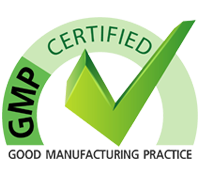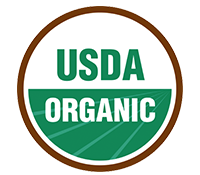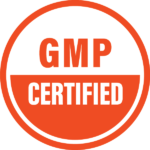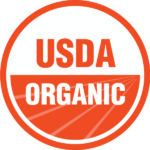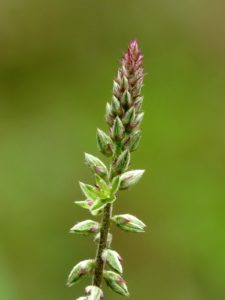
Origin: Achyranthes Aspera plant originating from the Pacific Island region
Also Known As:
Devil’s horsewhip
Prickly chaff flower
Burweed
Crocus staff
Overview: Achyranthes Aspera is a plant from the Amaranthaceae family and is mostly distributed throughout the topical world. It contains triterpenoid saponins which possess oleanolic acid as the aglycone.
Achyranthes Aspera is commonly used as an herb to help treat depression and forms of anxiety. It also plays a huge role in mood enhancing effects throughout the body.
Common Dosage: The recommended dosage for Achyranthes Aspera depends on several factors such as the user’s age, health, and several other conditions.
Overview Description
Achyranthes aspera also known as chaff-flower, prickly chaff flower, devil’s horsewhip and Sanskrit is a species of plant in the family Amaranthaceae, indigenous to South-East Asia and Africa.. It is distributed throughout the tropical world. It can be found in many places growing as an introduced species and a common weed. It is an invasive species in some areas, including many Pacific Islands environments.
Achyranthes aspera has shown to contain fatty acids, bisdesmosidic, triterpenoid based saponins, ecdysterone, n-hexacos-14- enoic, oleanolic acid, triacontanol, spinasterol,dihydroxy ketones, spathulenol, alkaloids, D-glucuronic, Betaine, Achyranthine and various amino acids.
Benefits and uses
Achyranthes aspera possesses some medicinal properties and is used in treatment of cough, bronchitis and rheumatism, malarial fever, dysentery, asthma, hypertension and diabetes.
May help with Asthma and bronchitis as it is known to open up the lungs.
Can help relieve nausea and vomiting within a short time after consuming it.
Has shown to help heal wounds as the action of the herb on the superficial cuts, scrapes, and wounds helps to improve the healing time.
Aids in Weight loss as it has properties of scraping cholesterol and it reduces fat deposition, so your body begins to lose weight.
Can help itching for relief from hemorrhoids and piles. It also can prevent constipation and other conditions that lead to piles. The herb provides relief from external pain, scorpion bites, and itching. You can apply the paste on the site of the wound or bite locally to get relief.
Can be used for oral hygiene as it cleans and whitens your teeth like nothing else and stops your gums from bleeding.
May help with infections and help decrease sputum (saliva and mucus coughed up from the respiratory tract, typically as a result of infection) and getting rid of worms in the head and neck region. By having the herb regularly, you can break down and expel sputum.
Improves appetite by improving taste and has shown useful for relieving anorexia
Can be used to help anemia by improving blood count
Forms and Sources
Achyranthes aspera, chaff-flower, prickly chaff flower, devil’s horsewhip and Sanskrit
Side Effects and Interactions
Achyranthes Aspera L were found to be nontoxic.
It is not recommended for pregnant women. Can be used in lactating mothers after birth.
How to Label
Apamarg 10:1 Extract Powder (Achyranthes Aspera)
Research & Studies (References)
Evaluation of pharmacological potentials of the aerial part of Achyranthes aspera L.: in vivo, in vitro and in silico approaches
The outcomes of this research demonstrate that MEAA may provide potential for mitigating depression, anxiety, and coagulation.
https://link.springer.com/article/10.1007/s13596-020-00528-5
Pharmacognostic, Preliminary Phyto Chemical and Pharmacological Studies on the Roots of Achyranthes aspera
The photochemical investigation showed the presence of alkaloids, glycosides, proteins, free amino acids, lignin, carbohydrates, flavonoids, tannins and a phenolic compound were identified and anti microbial activity was identified. Further studies are required to isolate and characterize the active principle of A.aspera whichhaveanti microbial activity
http://impactfactor.org/PDF/IJPPR/4/IJPPR,Vol4,Issue3,Article14.pdf
Spermicidal action of a protein isolated from ethanolic root extracts of Achyranthes aspera: An in vitro study
Hence this study showed that the protein isolated from the roots of Achyranthes aspera possess spermicidal activity in vitro and can act as a spermicide similar to that of nonoxynol 9. Ap also possessed spermicidal activity against human sperms in vitro.
https://www.sciencedirect.com/science/article/abs/pii/S0944711311000080
ACHYRANTHES ASPERA: A POTENT IMMUNOSTIMULATING PLANT FOR TRADITIONAL MEDICINE
The plant shows many pharmacological activities like spermicidal, anti-allergic, cardiovascular, nephroprotective, antiparasitic, anti-inflammatory, hypoglyceamic, analgesic, hepatoprotective potency, inhibit leukocyte infiltration (particularly eosinophils and neutrophils), antiperiodic, antimicrobial, purgative, antipyretic and are used in various types of gastric disorders. Thus, Achyranthes aspera is quite promising as a multipurpose medicinal agent and further clinical trials should be performed to prove its efficacy. So the present review substantiates the long standing believe that Achyranthes aspera has medicinal properties.
In vivo wound-healing efficacy and antioxidant activity of Achyranthes aspera in experimental burns
Histopathological examination of the granulation tissues in the A. aspera-treated animals showed collagen deposition, fibroblast proliferation and formation of epidermis.
https://www.tandfonline.com/doi/full/10.3109/13880209.2011.642885
Wound Healing and Antioxidant Activity of Achyranthes aspera
The extracts responded significantly in both the wound models tested. Also, the plant exhibited good antioxidant effect by preventing the formation of free radicals in the two models studied. Comparatively, the aqueous extract was found to be more effective. These findings could justify the inclusion of this plant in the management of cuts by the local people.
https://www.tandfonline.com/doi/full/10.1080/13880200802366645
Experimental Studies of Achyranthes aspera (L) Preventing Nephrotoxicity Induced by Lead in Albino Rats
Treatment with methanolic extract of A. aspera after lead induction completely ameliorated the lead-induced renal damage.
https://www.jstage.jst.go.jp/article/jhs/55/5/55_5_701/_article/-char/ja/
PHARMACOGNOSTICAL AND PRELIMINARY PHYTOCHEMICAL STUDIES OF ACHYRANTHES ASPERA LINN.
The phytochemical tests revealed the presence of sterols, flavonoids tannins and carbohydrates.
https://www.ncbi.nlm.nih.gov/pmc/articles/PMC3335226/
Effect of aqueous extracts of Achyranthes aspera Linn. on experimental animal model for inflammation
Both AEAA exhibit promising anti-inflammatory activity attributed to flavonoids, alkaloids, saponins and triterpenoids phytoconstituents.
https://www.ncbi.nlm.nih.gov/pmc/articles/PMC3644760/
Studies on the antibacterial properties of Achyranthes aspera stems.
https://www.cabdirect.org/cabdirect/abstract/19960305053
Impact of feeding ethanolic extracts of Achyranthes aspera Linn. on reproductive functions in male rats
The results suggest that ethanolic extract of A. aspera caused reproductive toxicity in male rats and the action may be by suppressing the synthesis of androgen.
http://nopr.niscair.res.in/handle/123456789/23582
Antioxidant and antibacterial activity of Achyranthes aspera : An in vitro study
The present study showed that there is a higher antioxidant and antimicrobial activity for the plant Achyranthes aspera. So this study supports the traditional usage as antiulcer and antimicrobial agents in new drugs for the therapy of infectious diseases caused by pathogens. The most active extracts can be subjected to isolation of the active compound and carry out further pharmacological evaluation. This will surely complement to the previously known therapeutic values and improve the popularization of this plant.
Present study was designed to evaluate anti-inflammatory activity of an aqueous extracts of Achyranthes aspera (AEAA).
Effect of aqueous extracts of Achyranthes aspera Linn. on experimental animal model for inflammation
https://www.ncbi.nlm.nih.gov/pmc/articles/PMC3644760/
Antibiofilm and quorum sensing inhibitory activity of Achyranthes aspera on cariogenic Streptococcus mutans: An in vitro and in silico study
Anticaries bioactive compounds of A. aspera with higher QS response regulator binding energy, low toxicity and optimal pharmacokinetic properties were revealed. These compounds with possible QQ ability hold the potential for use as anticaries drug leads and antibiofilm preventative medicine.
https://www.tandfonline.com/doi/full/10.3109/13880209.2013.764330



